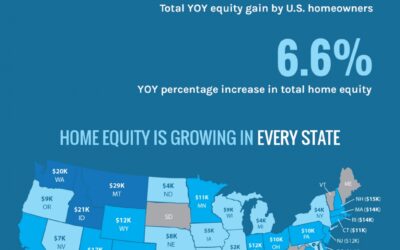
“Despite what you may be hearing in the news, nationally, home prices aren’t falling.”
If you’re thinking of making a move, one of the biggest questions you have right now is probably: what’s happening with home prices? Despite what you may be hearing in the news, nationally, home prices aren’t falling. It’s just that price growth is beginning to normalize. Here’s the context you need to really understand that trend.
In the housing market, there are predictable ebbs and flows that happen each year. It’s called seasonality. Spring is the peak homebuying season when the market is most active. That activity is typically still strong in the summer but begins to wane as the cooler months approach. Home prices follow along with seasonality because prices appreciate most when something is in high demand.
That’s why there’s a reliable long-term home price trend. The graph below uses data from Case-Shiller to show typical monthly home price movement from 1973 through 2022 (not adjusted, so you can see the seasonality):
As the data shows, at the beginning of the year, home prices grow, but not as much as they do in the spring and summer markets. That’s because the market is less active in January and February since fewer people move in the cooler months. As the market transitions into the peak homebuying season in the spring, activity ramps up, and home prices go up a lot more in response. Then, as fall and winter approach, activity eases again. Price growth slows, but still typically appreciates.
After several unusual ‘unicorn’ years, today’s higher mortgage rates helped usher in the first signs of the return of seasonality. As Selma Hepp, Chief Economist at CoreLogic, explains:
“High mortgage rates have slowed additional price surges, with monthly increases returning to regular seasonal averages. In other words, home prices are still growing but are in line with historic seasonal expectations.”
Why This Is So Important to Understand
In the coming months, you’re going to see the media talk more about home prices. In their coverage, you’ll likely see industry terms like these:
- Appreciation: when prices increase.
- Deceleration of appreciation: when prices continue to appreciate, but at a slower or more moderate pace.
- Depreciation: when prices decrease.
Don’t let the terminology confuse you or let any misleading headlines cause any unnecessary fear. The rapid pace of home price growth the market saw in recent years was unsustainable. It had to slow down at some point and that’s what we’re starting to see – deceleration of appreciation, not depreciation.
Remember, it’s normal to see home price growth slow down as the year goes on. And that definitely doesn’t mean home prices are falling. They’re just rising at a more moderate pace.
Bottom Line
While the headlines are generating fear and confusion on what’s happening with home prices, the truth is simple. Home price appreciation is returning to normal seasonality. If you have questions about what’s happening with prices in our local area, let’s connect.
To view original article, visit Keeping Current Matters.
Should You Buy a Retirement Home Sooner Rather than Later?
If you’re a retiree with a single-family home and want to move closer to your family, now is the time to put your house on the market.
A Homeowner’s Net Worth Is 40x Greater Than a Renter’s
The housing market has made a full recovery, and all-time low interest rates are giving home buyers a big boost in purchasing power.
Is it Time to Move into a Single-Story Home?
Single-story homes have a lot of benefits and are often in higher demand. This bodes well for future resale opportunities.
Why Pricing Your House Right Is Essential
When it comes to pricing your home, the goal is to increase visibility and drive more buyers your way.
Rising Home Equity Can Power Your Next Move
Over the past year, the average homeowner gained $9,800 in equity, growing their overall net worth.
Buyers Are Finding More Space in the Luxury Home Market
Home offices, multi-purpose rooms, gyms, and theaters are becoming more popular.








.jpg )



